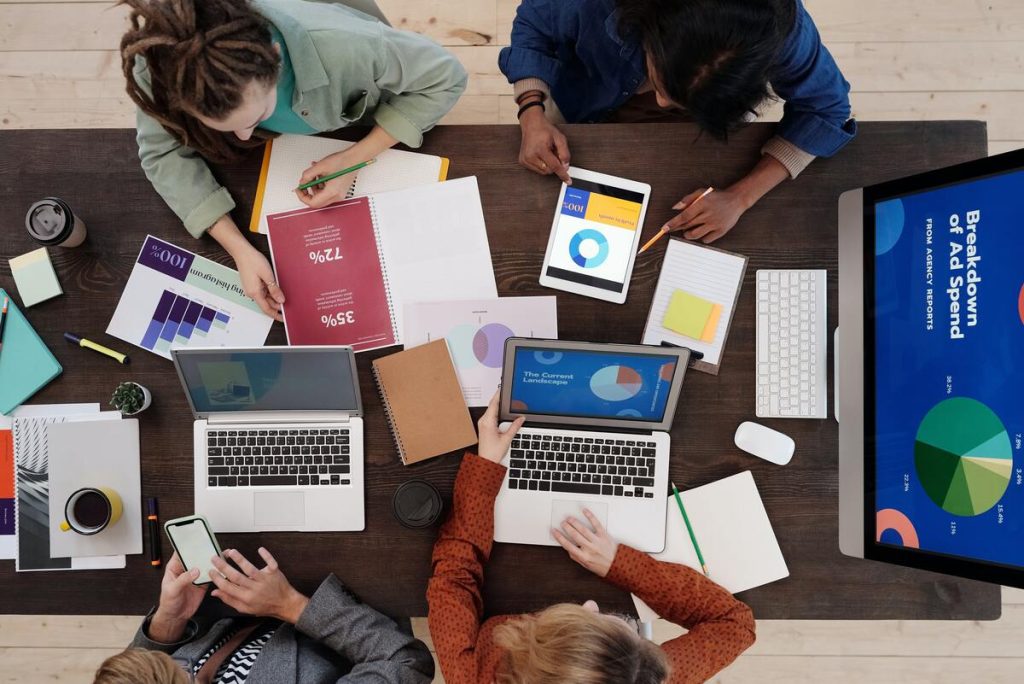Utilizing Posters In Your Advertising Strategy: The Pros And Cons
Introduction
Advertising Strategy- While digital marketing channels have gained significant prominence in recent years, traditional advertising methods still hold their ground. One such traditional medium that continues to play a crucial role in advertising campaigns is the poster.
Utilizing posters in your advertising strategy can be a powerful tool to communicate your message and engage with potential customers. Posters possess a unique ability to captivate attention, particularly in high-traffic areas where they can effectively reach a wide range of individuals. Their visual appeal and strategic placement can make them a potent means of grabbing attention and creating brand awareness.
Understanding the advantages and limitations of utilizing posters in your advertising strategy is essential for making informed decisions about your marketing efforts. On the positive side, posters offer a cost-effective option compared to other advertising channels, allowing businesses with limited budgets to effectively promote their products or services. Additionally, posters can have a long-lasting impact, as they can remain visible for an extended period, reinforcing brand recognition.
Are posters a good marketing strategy?
Utilizing poster marketing along with your other print strategies like newsletters and direct mail helps to increase the number of interactions customers have with your brand. This builds brand awareness and trust, and ultimately improves sales.
Posters can be a highly effective marketing strategy when implemented strategically and with a clear understanding of the target audience. As a visual medium, posters have the potential to grab attention, convey key messages, and create a lasting impact. They offer a tangible presence in the physical world, allowing businesses to reach a wide range of individuals in various locations. By utilizing eye-catching designs, bold typography, and vibrant colors, posters can captivate viewers and generate interest in a product, event, or brand.
One of the main advantages of posters as a marketing strategy is their versatility. They can be placed in high-traffic areas such as busy streets, malls, universities, or public transportation hubs, ensuring maximum exposure to potential customers. Moreover, posters can be created in different sizes, enabling businesses to adapt their marketing efforts to specific spaces and target demographics.

What are the advantages of using posters for advertising?
Affordability. One of the main benefits of poster advertising is quite simply that it is comparatively cheap
- Visibility
- Credibility
- Recall
- Flexibility
- Emotional Response
- Local Impact
- Call to Action.
Posters are a versatile and effective tool for advertising with numerous advantages that make them a popular choice among marketers. Firstly, posters offer excellent visibility as they can be strategically placed in high-traffic areas such as streets, bus stops, and shopping centers, ensuring a wide reach and exposure to a diverse audience.
Their large size and eye-catching designs make them difficult to ignore, capturing the attention of passersby and conveying the message effectively. This flexibility in design also allows for customization to match the target audience, ensuring the message resonates with the intended demographic.
Another significant advantage of using posters is their cost-effectiveness. Compared to other advertising mediums like television or radio, printing and distributing posters are relatively inexpensive. This affordability makes posters an attractive option, particularly for small businesses or organizations with limited marketing budgets. This longevity also allows potential customers to engage with the advertisement at their own convenience, making posters a non-intrusive yet impactful advertising method.
What are the cons and pros?
The favorable and the unfavorable factors or reasons; advantages and disadvantages.
Printing posters as a marketing strategy comes with both pros and cons that should be considered. Starting with the pros, posters have a visual impact that can grab attention and create brand awareness. They provide a tangible presence in the physical world and can be strategically placed in high-traffic areas to reach a wide range of potential customers. Posters also offer creative freedom, allowing businesses to showcase their brand’s personality and distinctiveness through eye-catching designs. Additionally, printing posters can be a cost-effective marketing tool, especially for businesses with limited budgets, as they require relatively low production costs and can be printed in bulk.
While they can reach a wide audience, it can be challenging to ensure that the right people see them. Unlike digital advertising, which can be targeted based on demographics and interests, posters are more generalized in their reach. Moreover, the effectiveness of posters can be difficult to measure. Unlike online ads that can provide data on impressions, clicks, and conversions, it is challenging to track the direct impact of a poster campaign. This lack of metrics can make it harder to assess the return on investment.
Another con is the temporary nature of posters. They can be easily damaged, torn down, or covered up by other posters or graffiti, reducing their visibility and effectiveness over time. Additionally, designing a compelling poster requires skill and expertise. Without proper design knowledge, a poorly executed poster can fail to capture attention or convey the intended message.

What are the pros and cons of a poster?
Advantages. A poster speaks for itself; the presence of its author is not necessary. Disadvantages. Once a poster is printed it will be difficult to make corrections or adaptions; it is therefore less flexible when compared to a presentation that can be modified any time.
Posters have both advantages and disadvantages when used as a means of communication. On the positive side, posters offer excellent visibility and can attract attention in high-traffic areas. Their large size and eye-catching designs make them hard to ignore, ensuring that the intended message reaches a wide audience. Posters also provide creative freedom, allowing businesses and organizations to design visually appealing advertisements that leave a lasting impression on viewers.
They have a longer lifespan compared to other advertising mediums, continuously reinforcing the message and creating brand awareness. Furthermore, posters can be tangible and interactive, allowing viewers to engage with the content by reading, examining, and sharing them.
However, there are also some drawbacks to consider when using posters. One limitation is the lack of targeting specificity. Unlike digital advertising platforms that allow precise audience targeting, posters reach a broad audience without guaranteeing that the message will resonate with the intended demographic. Moreover, the effectiveness of posters heavily relies on their placement. If they are not strategically positioned in high-traffic areas, their visibility and impact may be diminished.
What are the benefits of posters and flyers?
Posters and flyers can be a remarkably effective way of getting your message out to the public. Whether you want to generate support for a project, raise awareness about an event, or inform the public about a community issue, posters and flyers help you communicate with community members.
This hands-on experience creates a deeper engagement and connection with the brand, increasing the likelihood of recall and brand recognition. Additionally, posters and flyers offer flexibility in terms of design and content. Marketers can leverage their creativity to craft visually appealing and informative materials that effectively communicate the message and capture the attention of the target audience.
One of the key advantages of posters and flyers is their versatility in terms of distribution. They can be strategically placed in high-traffic areas, such as community bulletin boards, cafes, and retail stores, ensuring a wide reach and exposure to a diverse audience.
Another benefit of posters and flyers is their cost-effectiveness. Compared to other forms of advertising, such as television or radio commercials, printing and distributing posters and flyers are relatively inexpensive. This affordability makes them a viable option, especially for small businesses or organizations with limited marketing budgets. Moreover, posters and flyers have a longer lifespan than some other advertising mediums.

What are the advantages of using utilizing posters in advertising?
Posters offer several advantages when used in advertising campaigns. Firstly, posters have a visual impact that can capture the attention of a wide range of individuals. A well-designed and strategically placed poster can stand out in high-traffic areas, such as busy streets, shopping centers, or public transportation stations, attracting the eyes of passersby. This visual appeal creates an opportunity for immediate engagement and message delivery.
Secondly, posters provide a cost-effective advertising option, especially for businesses with limited budgets. Compared to other advertising channels like television, radio, or online ads, printing and distributing posters is generally more affordable. With careful planning and targeted placement, posters can reach a significant number of people at a fraction of the cost of other advertising methods. This cost-effectiveness makes posters an attractive choice, particularly for small businesses or local events looking to maximize their advertising impact without breaking the bank.
Unlike digital ads that can be easily scrolled past or ignored, posters have a physical presence that can linger in the minds of viewers. This prolonged exposure helps to build familiarity with the brand and enhances the chances of a potential customer remembering the product or service being advertised.
Are posters cost-effective compared to other advertising methods?
Posters can be a cost-effective advertising method compared to other traditional and digital advertising channels. One of the primary advantages of using posters is their relatively low production and distribution costs. Printing posters is generally less expensive than producing television or radio commercials, creating online advertisements, or purchasing ad space in newspapers or magazines. With the availability of affordable printing services and a wide range of options for materials and sizes, businesses can produce a considerable number of posters within a reasonable budget.
Once a poster is printed and displayed in a strategic location, it can potentially remain visible for an extended period, continually promoting the brand or message without incurring additional expenses. This longevity makes posters a cost-effective choice, particularly for businesses targeting specific local areas or audiences.
Posters also provide flexibility in terms of placement. They can be positioned in high-traffic areas where they have a higher chance of capturing the attention of potential customers. By carefully selecting locations such as busy streets, shopping centers, or community bulletin boards, businesses can reach a wide audience without the recurring costs associated with online advertising or rental fees for billboards.

How can posters effectively grab and hold attention?
Posters can effectively grab and hold attention through various key elements and strategies that enhance their visual appeal and messaging. One crucial aspect is the use of eye-catching design elements. Posters with vibrant colors, bold typography, and striking visuals are more likely to stand out and attract the attention of viewers. By utilizing contrasting colors and utilizing fonts that are easy to read from a distance, posters can quickly draw people’s eyes and make them curious about the content.
Selecting locations where the target audience frequents increases the likelihood of grabbing attention. Placing posters near entrances, on busy streets, or in public transportation hubs allows for maximum exposure and increases the chances of capturing the interest of passersby.
Posters can also employ creative and compelling messaging to engage viewers. The use of concise and impactful headlines, slogans, or taglines can instantly communicate the main message and pique curiosity. Pairing the message with relevant visuals that convey the intended message or evoke emotions can further enhance the effectiveness of the poster in grabbing attention.
Conclusion
Posters have the power to captivate attention, create brand awareness, and serve as a cost-effective means of promotion. Their visual appeal and strategic placement in high-traffic areas can effectively reach a wide audience, making them a valuable tool for conveying your brand message.
To maximize the benefits of utilizing posters in your advertising strategy, it is crucial to strike a balance between creativity and simplicity in design, choose optimal locations for placement, and consider integrating them with digital marketing efforts. By understanding the pros and cons, businesses can make informed decisions and leverage the unique strengths of posters to enhance their overall advertising campaigns.

